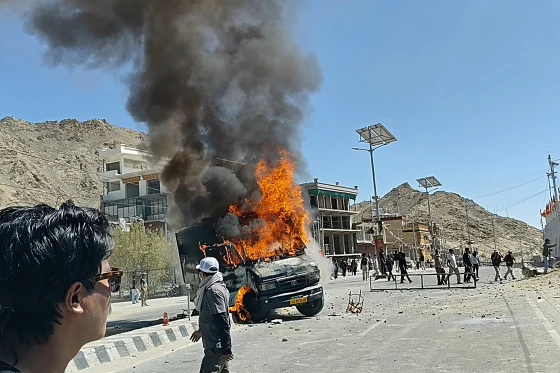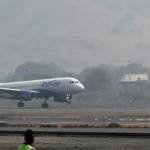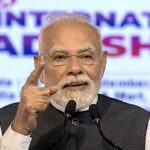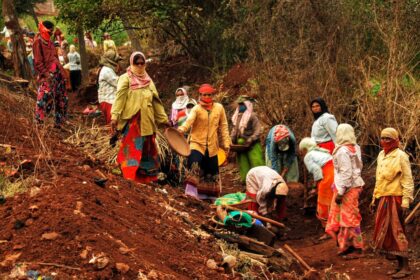Ladakh Statehood Protest Turns Violent as Demonstrators Clash with Police, Vehicle Torched
The icy expanse of Ladakh, known for its serene landscapes and strategic importance, is once again at the center of political unrest. What began as a demand for statehood and constitutional safeguards spiraled into violence when protesters clashed with security forces. The confrontation left a police vehicle torched, sparking national attention and raising fresh questions about governance, autonomy, and the fragile balance of peace in the region.
The Spark Behind the Protests
The immediate cause of the unrest lies in growing frustration among Ladakh’s population over unfulfilled promises since the region was carved out as a Union Territory in 2019. While many initially celebrated the separation from Jammu & Kashmir, expectations of development, representation, and cultural preservation have not been fully met.
The protesters’ demands include:
- Full statehood to ensure democratic representation.
- Sixth Schedule constitutional protections to safeguard Ladakh’s land, culture, and environment.
- Greater autonomy over decision-making, rather than heavy central oversight.
These demands have simmered for months, culminating in street demonstrations that turned violent.
How the Violence Unfolded
According to eyewitness accounts, what started as a peaceful rally in support of statehood quickly escalated when demonstrators encountered barricades set up by police. As tensions flared:
- Protesters reportedly pelted stones at security personnel.
- Police responded with batons and attempts at crowd control.
- A government vehicle was set ablaze, symbolizing the intensity of local anger.
The incident not only disrupted peace but also exposed the deep trust deficit between the local population and authorities.
Symbolism of the Burnt Police Vehicle
The torching of a police vehicle carries heavy symbolism. In many protest movements, attacking state property reflects anger against institutions perceived as oppressive. For Ladakhis, it was not merely an act of vandalism—it was a dramatic way to voice their frustration over being sidelined in national policy discussions.
Voices from the Ground
Local leaders and activists have stressed that the protest was not about violence but about being heard in Delhi. One student activist told reporters:
“We don’t want to fight the government, we want our rights. Burning a vehicle is not our goal, but ignoring our voice forces people to extreme actions.”
Meanwhile, shopkeepers, monks, and community elders expressed concern over the escalation, warning that unrest could scare away tourism and worsen economic hardships.
Government Response So Far
Authorities condemned the violence and promised strict action against those involved. Statements from local police stressed the need to maintain law and order, while central officials reiterated that Ladakh’s development plans remain on track.
However, there was little clarity on whether the core demand for statehood will be addressed. The absence of a clear political roadmap has only fueled uncertainty.
A Region of Strategic Importance
Beyond domestic politics, Ladakh holds immense strategic significance for India:
- It borders China and Pakistan, making it central to national security.
- It houses key military bases and forward positions in the Himalayas.
- It is a hub of environmental and cultural heritage, with Buddhist monasteries and indigenous traditions that need protection.
The government must therefore navigate the delicate balance between security and democracy when addressing these protests.
The violent turn of Ladakh’s statehood protests reflects a deeper crisis of trust, identity, and representation. While the torching of a police vehicle has captured headlines, the real issue lies in people’s long-standing demands for autonomy and constitutional safeguards.
As tensions mount, the government faces a crucial choice: engage meaningfully with Ladakh’s demands or risk further alienation in a region that is both strategically and symbolically vital to India.
Historical Background: Ladakh’s Integration into India
Ladakh, often referred to as the “Land of High Passes,” has a rich cultural and historical heritage. The region’s political journey has been complex, shaped by its geography, culture, and strategic location:
- After India’s independence in 1947, Ladakh became part of the erstwhile state of Jammu & Kashmir.
- The region’s Buddhist-majority population and distinct culture often felt underrepresented in the state’s political landscape.
- Over decades, locals voiced concerns about marginalization, lack of infrastructure, and limited economic opportunities.
These historical grievances laid the groundwork for demands for greater autonomy and recognition of Ladakh’s unique identity.
2019: The Creation of the Union Territory
The most significant political change came in August 2019, when the Indian government:
- Revoked Article 370, removing the special status of Jammu & Kashmir.
- Bifurcated the state, creating two Union Territories: Jammu & Kashmir, and Ladakh.
For many in Ladakh, this move was a mixed blessing:
- Positives included direct access to the central government, potential for accelerated development, and a more focused governance structure.
- Negatives included fear of losing local identity and autonomy, as Ladakh did not receive full statehood or special protections under the Sixth Schedule of the Constitution.
This partial measure sowed seeds of both hope and frustration, which have now culminated in protests.
Political Representation and Autonomy Challenges
Unlike full-fledged states, Union Territories are largely governed by centrally appointed administrators, with limited legislative power:
- Ladakh has no legislative assembly, meaning decisions on local governance are heavily influenced by the central government.
- The demand for statehood is largely about gaining democratic representation and the ability to legislate on matters that directly affect local communities.
- Calls for constitutional safeguards (similar to the Sixth Schedule for tribal regions) aim to protect land, culture, and natural resources from external exploitation.
Protesters argue that without these measures, the region’s unique heritage and ecological balance could be compromised.
Previous Protests and Local Movements
Ladakh has witnessed periodic unrest over decades, often linked to:
- Resource management disputes, especially water and land.
- Calls for separate administrative recognition in the 1980s and 1990s.
- Concerns over cultural preservation amid increased migration and tourism.
The current protests, however, are larger in scale and more organized, reflecting the population’s frustration with slow progress and perceived neglect since 2019.
The Role of Youth and Civil Society
One notable aspect of the 2025 protests is the active participation of young people and civil society organizations:
- Students, professionals, and local NGOs are demanding statehood as a matter of democratic rights.
- Social media has amplified their message, mobilizing support across the region and beyond.
- The involvement of youth underscores a long-term generational concern, rather than a spontaneous or isolated agitation.
This demographic factor adds urgency and intensity to the protests, as young Ladakhis are less willing to wait for incremental change.
Strategic Importance and Security Concerns
Ladakh’s geopolitical position adds another layer to the unrest:
- Sharing borders with China (Aksai Chin) and Pakistan (Gilgit-Baltistan), the region is strategically critical for India’s defense.
- Any sustained unrest risks security vulnerabilities, especially near border areas and sensitive military installations.
- This strategic importance explains why central authorities are cautious in responding, balancing between maintaining law and order and addressing legitimate local demands.
The combination of historical grievances, incomplete administrative autonomy, youth activism, and strategic sensitivity makes the current protests uniquely complex.
Understanding the historical and political background of Ladakh is essential to contextualize the recent violent protests. From decades of perceived neglect to the partial autonomy granted in 2019, the region’s frustrations are rooted in both identity and governance issues.
As the protests continue, the government faces the dual challenge of responding to immediate law-and-order concerns while addressing long-term aspirations for statehood, autonomy, and cultural protection.
Life Amid Protest and Uncertainty
In Ladakh’s villages and towns, daily life has been overshadowed by the protests. Markets have closed intermittently, schools have seen poor attendance, and essential services have been disrupted. For many residents, the sense of uncertainty weighs heavily.
Shopkeepers in Leh and Kargil describe dwindling footfall:
“When there are clashes, no one comes to the market. Business has already been low because of the short tourist season—now it’s worse,” said Tsering, a local trader.
Families worry about safety, particularly for young people who are often at the forefront of demonstrations. Mothers gather in prayer halls and monasteries, hoping for peace while recognizing their children’s right to demand a better future.
The Role of Students and Youth
Students and young professionals are central to the protests. Many of them argue that they are not protesting out of anger alone, but out of fear for the future:
- Without statehood, they worry about lack of opportunities and representation.
- Without constitutional safeguards, they fear outside exploitation of land and resources.
- Without a clear political roadmap, they fear perpetual uncertainty.
Social media has become a tool of empowerment. Young Ladakhis have launched digital campaigns, using hashtags, videos, and testimonies to bring attention to their struggle. This has created an emotional resonance nationwide, drawing solidarity from student unions and civil society groups in other states.
Economic Toll of the Unrest
The protests also carry economic consequences:
- Tourism Decline
- Ladakh, famous for its monasteries, lakes, and trekking routes, relies heavily on tourism.
- News of clashes and vehicle torching discourages domestic and international tourists, threatening the livelihoods of hotels, guides, and transport providers.
- Agricultural Concerns
- Many households still depend on traditional farming and animal husbandry.
- Prolonged unrest disrupts supply chains for essentials and restricts access to markets.
- Local Businesses
- Transport shutdowns and protest blockades raise the cost of goods.
- Small business owners, already coping with high-altitude challenges, face additional losses.
Thus, the economic burden falls not just on the government but on ordinary citizens who struggle to survive daily disruptions.
Voices of the Community
While some residents support the protests wholeheartedly, others express concern about escalating violence.
- Supporters argue that without strong action, the government will never take Ladakh’s demands seriously.
- Moderates worry that violence tarnishes the movement’s legitimacy and could alienate potential allies.
- Opponents of escalation emphasize peace, fearing that instability could harm tourism, disrupt education, and invite heavy-handed crackdowns.
This diversity of opinion highlights that while there is broad consensus on the need for statehood and safeguards, there are differences on strategy.
The Psychological Impact
The unrest also carries an emotional and psychological toll:
- Children growing up amidst protests experience fear and confusion.
- Young activists face burnout, balancing studies or jobs with political engagement.
- Elders, who have lived through earlier phases of neglect, express both pride in the youth’s courage and sorrow over the violence.
Community leaders and monks have tried to mediate, urging protesters to remain peaceful and authorities to show restraint. Their presence at prayer meetings and community gatherings reflects Ladakh’s tradition of seeking harmony, even in times of turmoil.
Women at the Forefront
A notable feature of the Ladakh protests is the active involvement of women. They are not only present at rallies but also play organizing roles. Women’s groups have issued statements, held vigils, and taken part in decision-making circles.
One activist explained:
“For us, this is about protecting our culture and future generations. Women are the backbone of Ladakhi society—we cannot remain silent when our identity is at risk.”
This participation adds moral weight to the movement and underscores its inclusive, community-driven character.
A Sense of Identity at Stake
For Ladakhis, the protests are not merely political—they are existential. The demands for statehood and constitutional protection stem from a desire to safeguard:
- Religious and cultural traditions rooted in Buddhism and Islam.
- Environmental sustainability in a fragile Himalayan ecosystem.
- Community-driven development that respects local priorities.
The unrest has therefore united diverse groups across the region in a shared sentiment: the fear of being sidelined in India’s governance structure.
Also Read : Navi Mumbai Airport Inauguration 2025 Postponed Due to Torrential Rains – New Date Expected Soon








